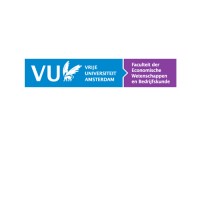Microsoft Coco Framework: blockchain game changer?
|18-9-2017 | Carlo de Meijer | treasuryXL
 Microsoft recently announced the introduction of the Coco (or Confidential Consortium) Framework. A ‘first of its kind innovation’ as they named it, designed to work with any ledger or operating system. CoCo is a blockchain protocol technology aimed to make it easier to build enterprise networks quicker and more secure using any distributed ledger. Our expert Carlo de Meijer explains the relevance of the new technology for confidential consortiums in an article on LinkedIn.
Microsoft recently announced the introduction of the Coco (or Confidential Consortium) Framework. A ‘first of its kind innovation’ as they named it, designed to work with any ledger or operating system. CoCo is a blockchain protocol technology aimed to make it easier to build enterprise networks quicker and more secure using any distributed ledger. Our expert Carlo de Meijer explains the relevance of the new technology for confidential consortiums in an article on LinkedIn.
We present a short summary of the article.
What’s the issue?
Corporate interest in blockchains is firmly growing. Embracing this innovative technology however remains a big hurdle for most enterprises, as there is no unified approach in this regard. As a result they have difficulties integrating in into their systems.
There are many different blockchains, but major blockchains are not designed to be interoperable with one another. As enterprises look to apply blockchain technology to meet their business needs, they’ve come to realize that many existing blockchain protocols fail to meet key business requirements. The problem is that most blockchain protocols today require complex development techniques to meet the operational and security needs of enterprises.
Issues like performance, confidentiality of data, governance and required processing power are still major stumbling blocks for using blockchains. One of the other key enterprise blockchain problems is that of access controls for transactions.
What is the Coco Framework?
The Coco Framework is an open-source Ethereum-based protocol, designed to provide high-scale and confidential blockchain networks for enterprise purposes. It should be seen as the foundation of blockchain for the enterprise.
It is designed to work with any ledger or operating system. It can connect existing blockchains with one another. The Framework is targeted especially for consortiums where nodes and actors can be controlled.
The Coco Framework is built to address some of the current limitations of enterprise blockchain. It is meant to reduce the complexity currently associated with blockchain protocol technology and make it easier for enterprises to adopt blockchain technology. This by increasing transaction speeds, offering confidentiality and simplify governance decisions. The ultimate goal is to boost widespread adoption, particularly among enterprises, of blockchain technology.
The CoCo Framework is not a decentralised solution in this regard as participants will still be able to exert a high degree of control over their blockchain. CoCo is more of a distributed ledger-oriented approach than a decentralised technology.
The design of the CoCo Framework
Microsoft is developing the CoCo Framework in cooperation with Intel, JP Morgan and Ethereum. The Coco platform is designed specifically for confidential consortiums, through the introduction of a trusted execution environment (TEE), advanced cryptography and innovative blockchain-focused consensus mechanisms “to open up new blockchain enabled scenarios across industries”.
The Coco Framework needs a trusted execution environment where nodes and actors are explicitly declared and controlled because it relies on shared trust between machines running modified blockchain software in order to avoid the need for transaction verification. With these TEEs a network of trusted enclaves can be build that all agree on the ledger and Coco code they are running. Because it’s an open framework, it can also support other compatible TEEs as they become available.
The idea is that enterprises may place their blockchain code in a trusted area, which is established through integrated tools such as Intel’s Software Guard Extensions (SGX) or Windows Virtual Secure Mode (VSM). These are hardware-based security technologies that the CoCo Framework uses to improve the throughput, efficiency and privacy of the blockchain.
Compatibility
The CoCo Framework is designed to integrate with a wide range of blockchains and distributed ledgers. It is meant to provide the infrastructural underpinnings for the growing number of such ledgers that are emerging from different vendors and groups. Although CoCo is not an actual ledger, it will help other companies with established blockchains to come together, link with each other and built large networks.
Problems to solve
Despite taking a more centralised approach there are many benefits to embracing the the CoCo Framework. When implemented into blockchain networks and processed in a trusted environment, allowing for a “simplified’ consensus mechanism” may solve the various privacy, speed and governance issues for commercial adoption by corporates. At the same time, ”they will not lack in security and immutability”, which are two of the driving factors behind blockchain technology as a whole.
According to the Coco Framework White Paper, these “enterprise-ready trusted blockchains networks” that all agree on the ledger and the CoCo code they are running, will deliver:
- Throughput and latency approaching database speeds.
- Richer, more flexible, business-specific confidentiality models.
- Network policy management through distributed governance.
- Support for non-deterministic transactions.
- Reduced energy consumption.
When to start?
According to Microsoft, the company has now started exploring the CoCo Framework’s potential across different industries, such as retail, supply chain and financial services.
Microsoft plans to make the Coco Framework available as an open source software project by 2018. It will be posted to and available on Github.
You can find more details about CoCo in Carlo de Meijer’s article on LinkedIn.

Economist and researcher
More articles about blockchain technology from Carlo de Meijer:
- Blockchain and derivatives: Re-imagining the industry
- Blockchain: Accelerated activity in trade finance
- Should SWIFT be afraid of blockchain technology?
- Blockchain and hyperledger hackfest: from another planet
- Blockchain, near real-world projects and collaboration: viable approaches
- Blockchain: Can it be of help for the agricultural industry?
- Could blockchain bring the EU capital market union forward?
- Blockchain: How to make it operational in your company?











